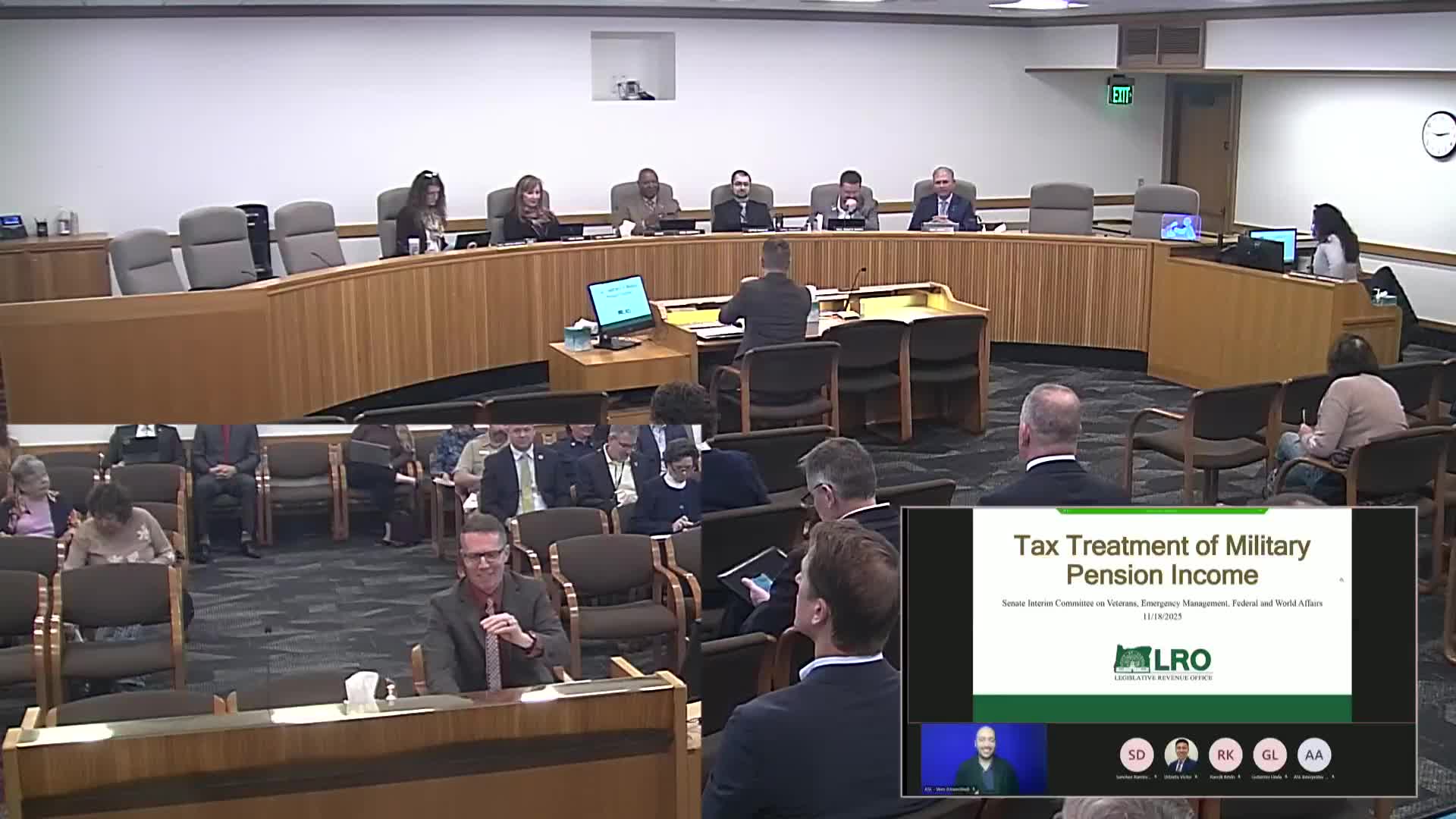Legislative Revenue Office outlines revenue impacts of military pension tax exclusions
November 18, 2025 | Legislative, Oregon
This article was created by AI summarizing key points discussed. AI makes mistakes, so for full details and context, please refer to the video of the full meeting. Please report any errors so we can fix them. Report an error »

Kyle Easton of the Legislative Revenue Office presented the committee with background on how Oregon taxes military pension income and estimates for several proposals under discussion.
Easton explained Oregon’s personal income tax starts from the federal tax base and that VA benefits are already non‑taxable and therefore excluded from this presentation. A key feature of Oregon law is the 1991 exemption: for federal pensioners with service before 1991 some portion of income may be exempt, and mixed pre‑1991/post‑1991 service is prorated.
The numbers Easton cited: LRO data show about 18,000 military retirees in Oregon (chart coverage 2012–2022), average military pension pay near $30,000 (for 2023) and policy proposals often use a $17,500 partial exclusion threshold. Easton said a full exclusion beginning in 2026 was modeled at roughly $30 million revenue loss in the first year, with growth thereafter; age‑based exemptions and partial exclusions (e.g., exempting the first $17,500 for those under age 63) produce different revenue impacts.
Why it matters: Easton said younger military retirees are more likely to have post‑1991 service (and thus less existing exemption), so the cost and distributional impact of exemptions varies by cohort and age. The committee’s earlier sponsors of related bills (SB 225 and others) were noted during remarks.
What’s next: Easton offered to provide the report link and additional details; members thanked LRO and signaled potential future consideration outside the short session.
Easton explained Oregon’s personal income tax starts from the federal tax base and that VA benefits are already non‑taxable and therefore excluded from this presentation. A key feature of Oregon law is the 1991 exemption: for federal pensioners with service before 1991 some portion of income may be exempt, and mixed pre‑1991/post‑1991 service is prorated.
The numbers Easton cited: LRO data show about 18,000 military retirees in Oregon (chart coverage 2012–2022), average military pension pay near $30,000 (for 2023) and policy proposals often use a $17,500 partial exclusion threshold. Easton said a full exclusion beginning in 2026 was modeled at roughly $30 million revenue loss in the first year, with growth thereafter; age‑based exemptions and partial exclusions (e.g., exempting the first $17,500 for those under age 63) produce different revenue impacts.
Why it matters: Easton said younger military retirees are more likely to have post‑1991 service (and thus less existing exemption), so the cost and distributional impact of exemptions varies by cohort and age. The committee’s earlier sponsors of related bills (SB 225 and others) were noted during remarks.
What’s next: Easton offered to provide the report link and additional details; members thanked LRO and signaled potential future consideration outside the short session.
Don't Miss a Word: See the Full Meeting!
Go beyond summaries. Unlock every video, transcript, and key insight with a Founder Membership.
✓
Get instant access to full meeting videos
✓
Search and clip any phrase from complete transcripts
✓
Receive AI-powered summaries & custom alerts
✓
Enjoy lifetime, unrestricted access to government data
30-day money-back guarantee

